In this independent documentary, the Mapuche vision of the world is the basis to understand the struggle to protect their land and culture. The music, the paintings, the poetry, the language, the rituals, the traditions, and the strength of nature and the ancestors are present in The Voice of the Mapuche.
La Voz Mapuche – A Documentary Film by Pablo Fernandez and Andrea Henriquez (2008)
The Mapuche defeated the Spanish Crown invaders, and do not recognize the border Chile and Argentina have tried to impose. Presently, the struggle is focused on maintaining their identity as a people, and stopping the encroachment of multinational corporations in Mapuche ancestral territory. In an effort to increase profits, logging, hydroelectric, oil, mining, and tourist companies – among others – cause destruction and pollution on both sides of the Andes Mountains. The music, the paintings, the poetry, the language, the rituals, the traditions, and the strength of nature and the ancestors are present in “The Voice of the Mapuche”. In this independent documentary, the Mapuche vision of the world is the basis to understand the struggle.
INTRODUCTION TO THE MAPUCHE PEOPLE
By Reynaldo Mariqueo and Jorge Calbucura
The Mapuche nation is situated in what is known as the Southern Cone of South America, in the area now occupied by the Argentine and Chilean states. As a result of population growth and hence overcrowding in indigenous reservations, the majority of Chilean Mapuche people now live in the large urban centres of Santiago, Concepción, Valparaíso, Temuco and Valdivia. The Mapuche population in Argentina has grown to around two hundred and fifty thousand. In the Chilean population census of 1992, carried out by the National Institute of Statistics, approximately one million people surveyed declared themselves to be Mapuche.
The Mapuche nation is situated in its historical ancestral territory, the Wall-Mapu: Wall; universe, Mapu; land/territory. Mapuche territorial entities are arranged along geographical lines in the following way: Puel mapu: the eastern lands (Pampa and Patagonia of Argentina), the territorial space of the Puelche. Pikun-mapu: the northern lands, the territorial space of the pikunche. Willi mapu: the southern lands, the territorial space of the williche. Pewen mapu: the land of the pewen (araucaria imbricata), the territorial space of the pewenche. Lafken mapu: the land of the sea, the territorial space of the lafkenche. Nag mapu: the land of the plains, the territorial space of the nagche. Wente mapu: the land of the valleys, the territorial space of the wenteche. In line with their territorial origin the Mapuche define themselves as: Puelche: people of the east; Pikunche; people of the north; Williche: people of the south; Pewenche: people of the pewen; Lafkenche: people of the sea, Nagche: people of the plains; or Wenteche: people of the valleys.
The traditional political structure of the Mapuche people is reproduced within the structure of the Mapuche territorial entity. It is organised into four geographical regions or Meli wixan-mapu. Each wixan-mapu is made up of aylla rewe (eight districts) which, in turn, are made up of communities known as lof.

The lof or community is represented by the lonko (male or female) who is the head of the group of authorities that have traditionally been responsible for the destiny of the community. This group includes the machi (the spiritual guide or doctor); the Werrken (the spokesperson, ambassador or messenger); the Ngenpin (the fiscal representative, master of ceremony and historian) and the Ñidol (the instructor of laws and codes of practice). All members of the meli wixan- mapu are responsible for upholding the legal judgements passed by the Ad-mapu or the code of practice, which regulates and punishes their conduct and responsibility before the community.
Despite the assimilationist efforts of the dominant Chilean society, the Mapuche people have managed to preserve their traditional language (mapudungun), their religion and the socio-political structure which regulates life on the indigenous reserves where they have been forced to live since the beginning of the twentieth century. Their identity as an autonomous nation together with their awareness of being part of a distinct cultural and historic heritage and spirituality has created a socio-political movement which draws on communal aspirations.
On the 6th January 1641 the Mapuche nation and the Spanish Empire concluded and signed the treaty of Killin, in which the Spanish Crown recognised the territorial autonomy of the Mapuche nation. From this date, for more than two centuries, the Bío-Bío river was respected as a natural frontier and the lands to the south of this boundary as territory of the Mapuche nation in full exercise of its right to self-determination.
This event, without parallel in the history of the indigenous peoples of South America, was the result of the failure of the Spanish Crown to defeat the Mapuche nation on the battlefield. The signing of the treaty of Killin, in addition to the 28 subsequent treaties signed with the Mapuche nation during two centuries of diplomatic relations, makes the Mapuche stand out in the history of the indigenous peoples of South America. This is because they are the first and only indigenous nation on the continent, whose sovereignty and autonomy was legally recognised.
Between 1860-1885, as a result of a joint military campaign in the Southern Cone, known as the “Pacification of Araucania” in Chile, and the “Conquest of the Desert” in Argentina, around 100,000 Mapuche were cruelly massacred. And what one must also consider is that -in an undeclared war- the Argentine and Chilean states got away with the flagrant violation of international law by not respecting a border frontier recognised by an international power. The subsequent military occupation of Mapuche territory and the deportation of its inhabitants to indigenous reservations are proof of yet another outrage committed against international law.
The confiscation of land and the forced relocation onto indigenous reservations of the Mapuche people who had survived the war, was carried out by the Chilean and Argentinean states with the clear intention of exterminating the Mapuche both physically and culturally. For decades thousands of Mapuche were exiled and their traditional authorities persecuted.
At the beginning of the 1990s, despite the return to democracy in both Chile and Argentina, it can unfortunately be argued that the situation has changed very little for the Mapuche people.
Nowadays -in both countries- the Mapuche continue to be a people who socially and politically suffer the consequences of repression and the imposition of assimilationist policies. The ethnocidal policy systematically applied by the military regimes against indigenous peoples continues to this day, demonstrated by the violation of their human rights and fundamental freedoms. Governments consistently refuse to recognise the validity of the international accords for the promotion and protection of the rights of indigenous peoples. We would like to draw attention to the fact that the Chilean state have failed to ratify these international laws.
However, as the press has frequently testified, the Mapuche nation is growing in population terms, getting stronger and continuing with more vitality than ever. The Mapuche persist in demanding respect for their rights as a people, the return of their lands, and justice and freedom.
By:
Reynaldo Mariqueo
Jorge Calbucura
http://www.mapuche-nation.org/english/main/feature/m_nation.htm


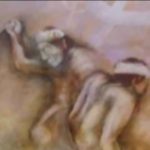
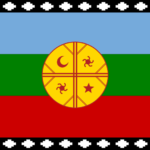

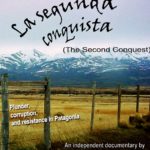
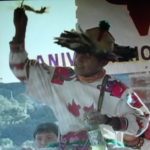
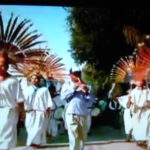
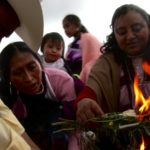






Pingback: Argentina: The Second Conquest of Patagonia's Indigenous | WilderUtopia.com